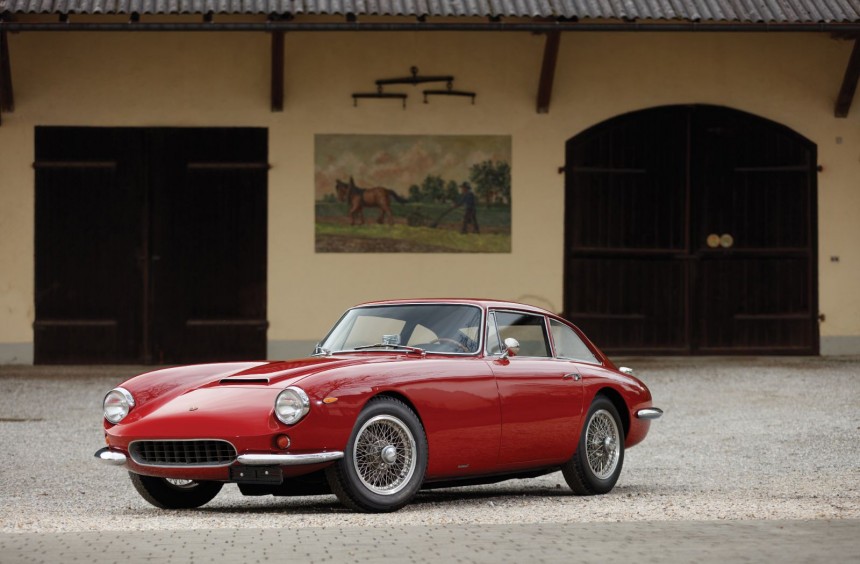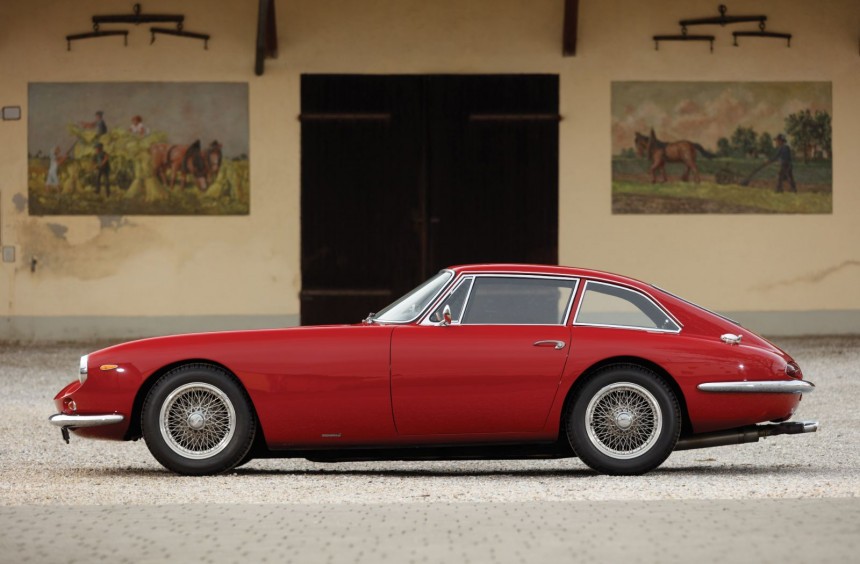It was initially called Apollo, then Vetta Ventura 5000 GT, and it was created to rival the most exquisite European grand tourers.
Ah, the 1960s. For many enthusiasts, that was one of the best decades for automotive design. During those years, iconic models such as the Ferrari 250 GTO, Alfa Romeo 33 Stradale, Lamborghini Miura, or Aston Martin DB5 were introduced.
It was also a time when Frank Reisner, a former chemical engineer born in Hungary, raised in Canada, and educated at the University of Michigan, met a young American engineer named Milt Brown while attending the 1960 Monaco Grand Prix. Pretty crazy, right? Well, they decided to join forces and attempt something even crazier: build an American grand tourer that could rival the most elegant models from Ferrari, Alfa, or Aston Martin.
Reisner was the owner of Construzione Automobili Intermeccanica, an Italian coachbuilder that he had founded in Turin a year before the encounter, while Brown was obsessed with building an exotic car on U.S. soil and, along with his partner Newt Davis, was starting a small car manufacturing company called International Motor Cars (IMC) in Oakland, California.
By early 1963, IMC was working on a fastback coupe that would employ a ladder chassis and the aluminum bodywork produced in Italy by Intermeccanica. Named Apollo 5000 GT, the car was initially designed by Brown's friend, Ron Plescia but subsequently received several modifications from former Bertone stylist Franco Scaglione.
As you can see, the final product was quite the stunner. Boasting an elegant mix of curved lines, it could have been mistaken for a Ferrari by someone who didn’t notice the absence of prancing horse badges.
Like the bodywork, the interior was stylish for the 1960s. Everything was upholstered in high-quality leather contrasted by a simple yet beautiful wood-trimmed steering wheel. Optional features included an air conditioning system or an AM/FM radio.
While it looked unmistakably Italian - especially when painted red - the 5000 GT was based on American underpinnings. Its suspension system was sourced from Buick, and with bronze bushings up front or a four-link live axle at the rear, it was quite high-tech for the era.
Also borrowed from the GM division was the 300-ci (4.9-liter) overhead valve V8 that was linked to a Borg-Warner T10 four-speed manual. The powerplant came with a four-barrel carburetor setup and was rated at 250 hp.
Fully assembled in Oakland, around 40 cars (including a convertible one-off) were sold until IMC ran out of funds in the summer of 1964. To allow Intermecanica to continue production of the chassis and bodies while IMC attempted to recover, Reisner struck a deal with the two carmaker’s founders, which allowed him to redirect components for 19 cars to Fred Ricketts of Dallas, Texas. The latter was the owner of Vanguard Industries, an aftermarket supplier of auto air conditioners that intended to continue building the 5000 GT. Unfortunately, Vanguard only managed to produce only 11 units that were sold under the Vetta Ventura moniker before the company folded a year later.
Several attempts to relaunch the brand in the years that followed were unsuccessful, and the 5000 GT story was over sooner than anyone involved would have expected. Some enthusiasts obtained leftover parts from the defunct companies, and it is believed that around 20 additional cars were completed as late as 1971, bringing the grand total of roadworthy 5000 GTs to 88.
Less than half of them have survived to this day, and the average value for one stands around the $120,000 mark, which makes it a rare and affordable alternative to the iconic grand tourers of the 1960s.
It was also a time when Frank Reisner, a former chemical engineer born in Hungary, raised in Canada, and educated at the University of Michigan, met a young American engineer named Milt Brown while attending the 1960 Monaco Grand Prix. Pretty crazy, right? Well, they decided to join forces and attempt something even crazier: build an American grand tourer that could rival the most elegant models from Ferrari, Alfa, or Aston Martin.
Reisner was the owner of Construzione Automobili Intermeccanica, an Italian coachbuilder that he had founded in Turin a year before the encounter, while Brown was obsessed with building an exotic car on U.S. soil and, along with his partner Newt Davis, was starting a small car manufacturing company called International Motor Cars (IMC) in Oakland, California.
As you can see, the final product was quite the stunner. Boasting an elegant mix of curved lines, it could have been mistaken for a Ferrari by someone who didn’t notice the absence of prancing horse badges.
Like the bodywork, the interior was stylish for the 1960s. Everything was upholstered in high-quality leather contrasted by a simple yet beautiful wood-trimmed steering wheel. Optional features included an air conditioning system or an AM/FM radio.
Also borrowed from the GM division was the 300-ci (4.9-liter) overhead valve V8 that was linked to a Borg-Warner T10 four-speed manual. The powerplant came with a four-barrel carburetor setup and was rated at 250 hp.
Fully assembled in Oakland, around 40 cars (including a convertible one-off) were sold until IMC ran out of funds in the summer of 1964. To allow Intermecanica to continue production of the chassis and bodies while IMC attempted to recover, Reisner struck a deal with the two carmaker’s founders, which allowed him to redirect components for 19 cars to Fred Ricketts of Dallas, Texas. The latter was the owner of Vanguard Industries, an aftermarket supplier of auto air conditioners that intended to continue building the 5000 GT. Unfortunately, Vanguard only managed to produce only 11 units that were sold under the Vetta Ventura moniker before the company folded a year later.
Several attempts to relaunch the brand in the years that followed were unsuccessful, and the 5000 GT story was over sooner than anyone involved would have expected. Some enthusiasts obtained leftover parts from the defunct companies, and it is believed that around 20 additional cars were completed as late as 1971, bringing the grand total of roadworthy 5000 GTs to 88.
Less than half of them have survived to this day, and the average value for one stands around the $120,000 mark, which makes it a rare and affordable alternative to the iconic grand tourers of the 1960s.










